Musée Rodin (Rodin Museum)
- Address: 77 Rue de Varenne, 75007 Paris
- Tags:
 What to see Paris,
Paris,
France
What to see Paris,
Paris,
France
- Telephone: +33 (0)1 44 1
- Website: http://www.musee-rodin.fr/
Where the lovers were born
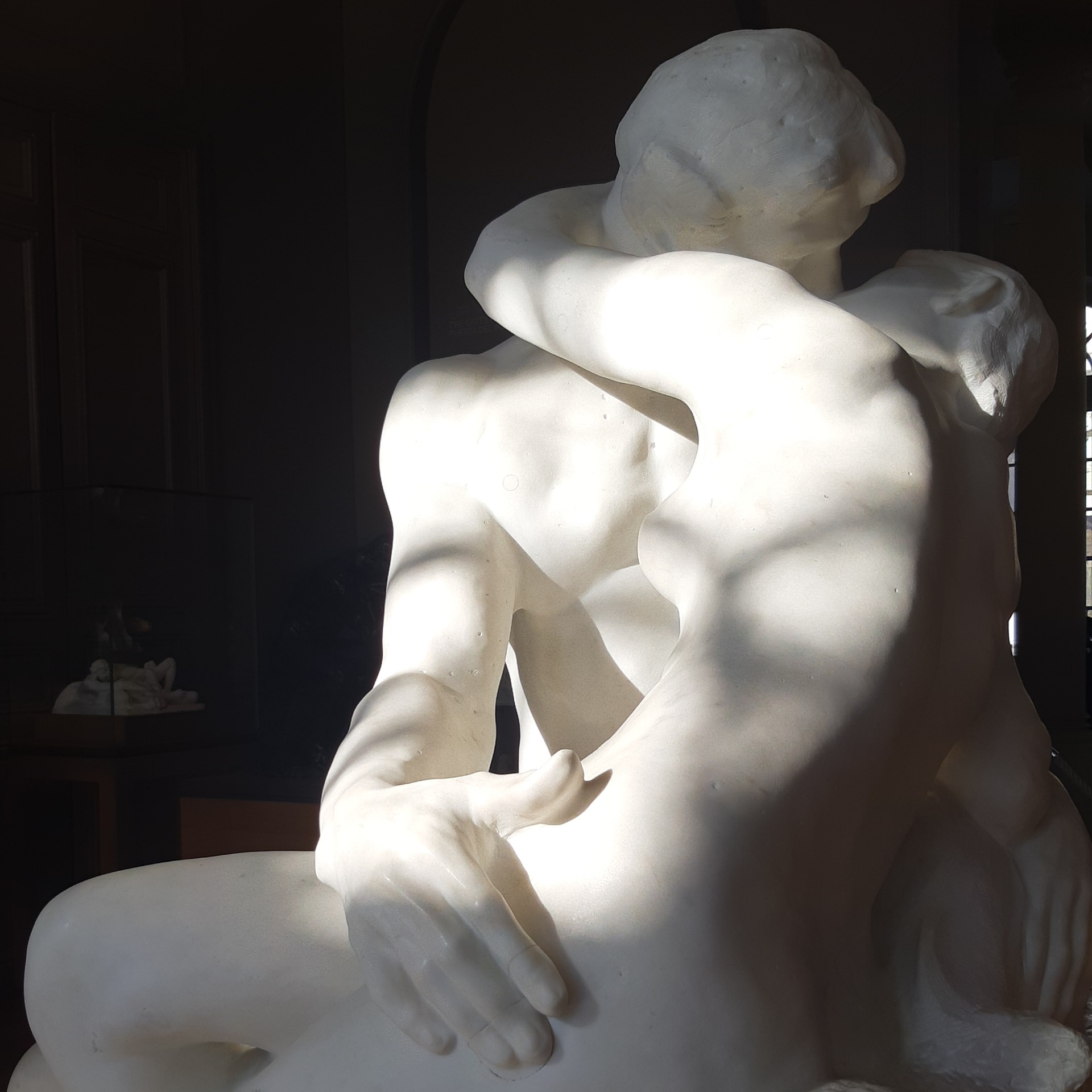
His hands on her skin, as pale as if she does not exist. Fingers slightly bent, holding her gently around the waist. Love expressed without grand gestures but with the simplicity of a basic touch between two human beings.
That is the imagery that occupies tourists in one of the main halls of the famous Musée Rodin in the heart of Paris, on charming and tranquil Rue Varenne. The museum exists for a good century now. It opened its doors to the public in 1919, after the end of the First World War. The great artist, sculptor and painter Auguste Rodin, offered all his works, designs, sketches, collections and correspondences to the authorities a few years ago already, but then the conversations and planning stopped for a while because of the war. Even though Rodin himself died before the end of WW1, the museum still opened a year after the Allies won.
The museum's collection contains sculptures, drawings, prints, paintings, ceramics, photographs, collection of classic arts and the archives, such as correspondences. In this text I will focus only on the most famous ones, and it is on you, that you find your personal favorites among the less known artworks in the museum halls.
The Kiss
It seems that the world of art lovers holds a certain obsession with the depiction of love and passion. Rodin's Kiss is just as famous as the Klimt's one and widely reproduced all over Europe. If there is one artwork from this man that you know already, it is probably this one. It presents two lovers, united in a single passionate kiss; they are completely naked and with no other attributes that would define their identity, so the public gave them a simple name: The Kiss. In reality, the two lovers were inspired by a very dramatic passage in Dante's Divine comedy: the moment when the cheated husband comes home and find his wife kissing another man. Mad of anger and jealousy, he slaughters them both and they are condemned to spend their eternity in hell. Francesca and Paolo would, therefore, have to be part of the sculpture for the equally famous Gates of Hell, that you can see in the garden, but instead, Rodin decided that the sculpture was too bright and happy, it transferred too much joy and passion to be placed in the land of eternal suffering. Instead, it lived as a separate individual masterpiece and became equally known as the Gates of Hell.
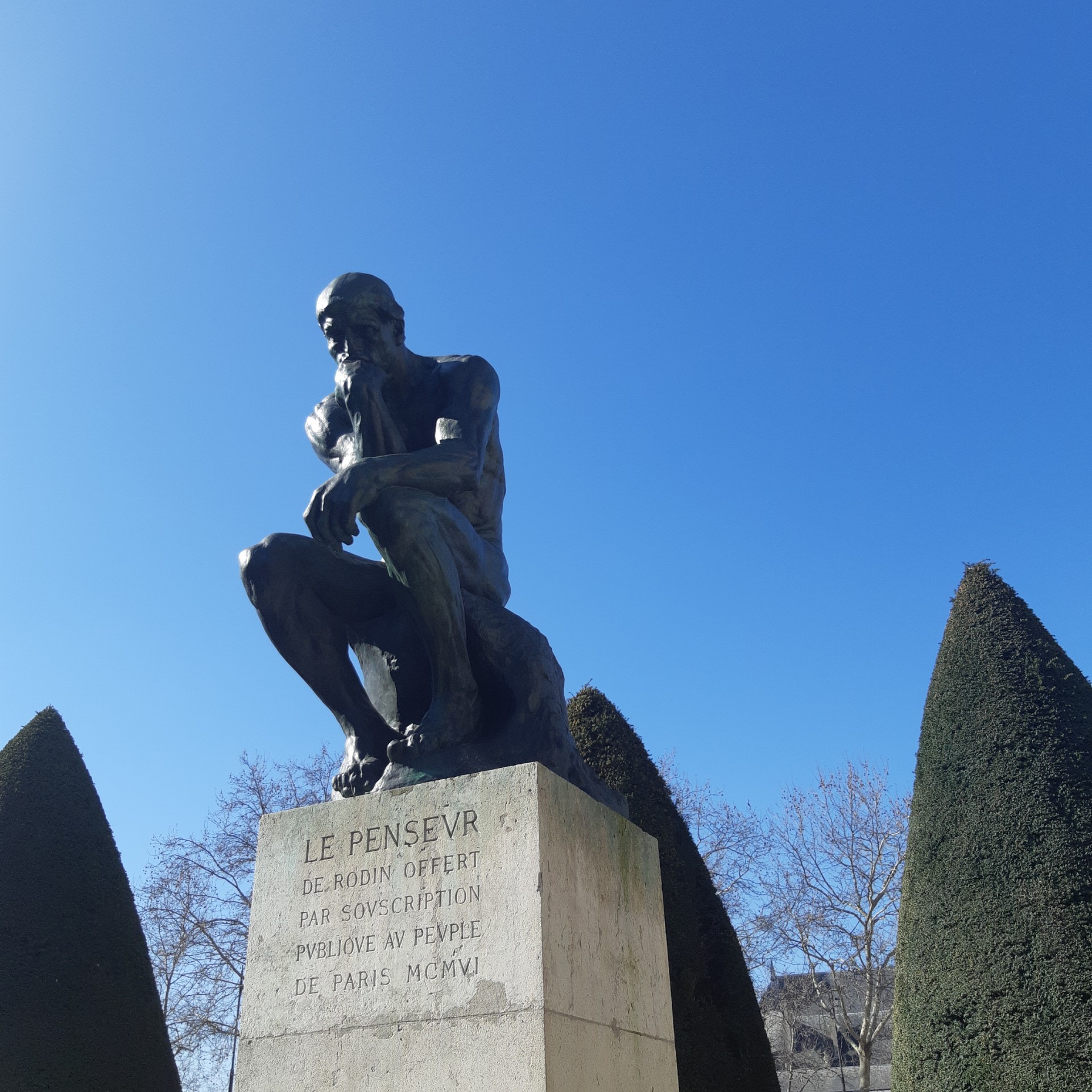
The Thinker
Yet another giant sculpture that was constructed for the Gates of Hell, but unlike the sculpture of the lovers, united in a kiss, this man can still be found on the top of the gates. He was inspired by Dante, the writer of the Divine Comedy, who sits above the Hell underneath him, observing the chaos and contemplating. Nevertheless, the solo exhibition of a piece in his monumental dimensions achieved even greatest attention and prize from the public.
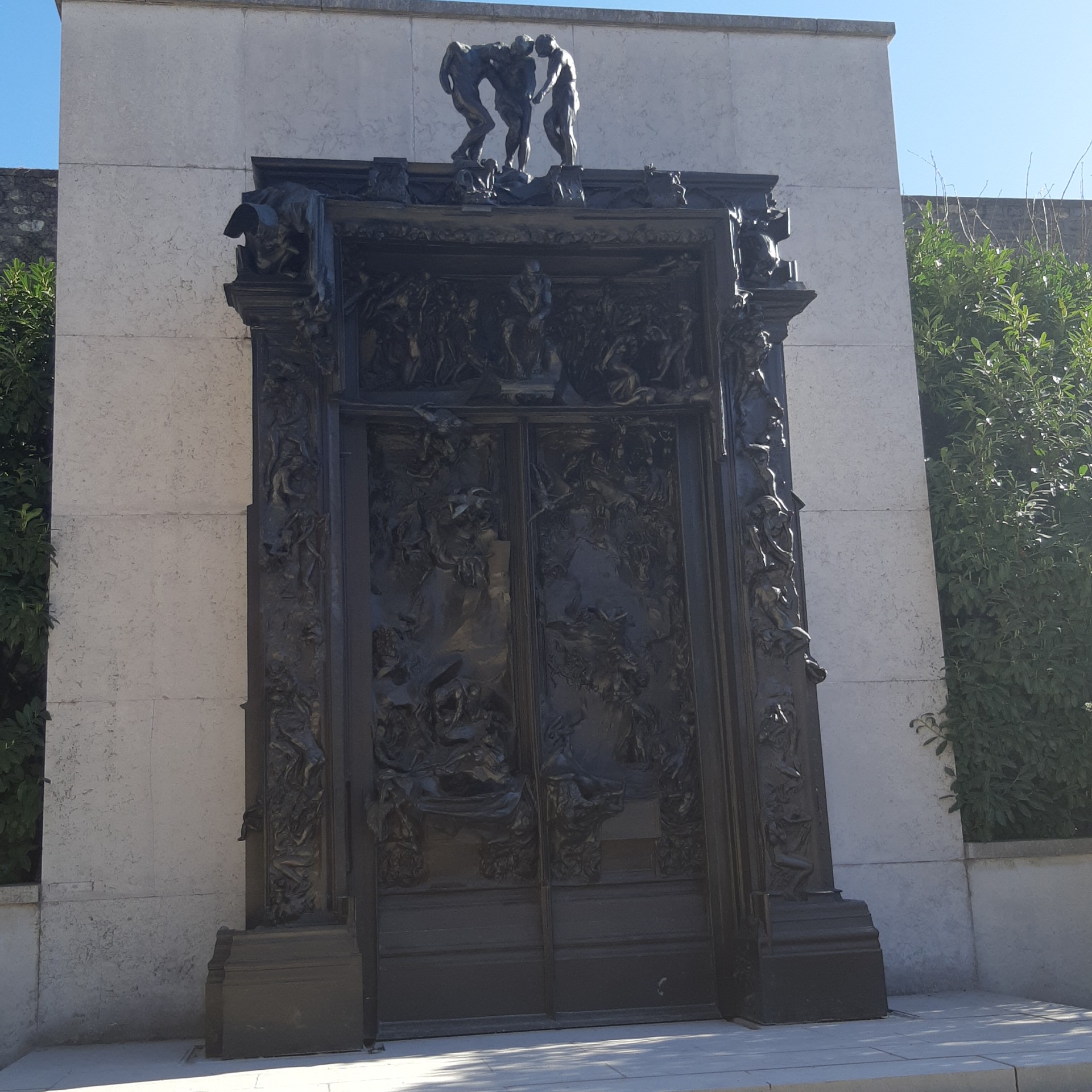
The Gates of Hell
As it goes with many of his greatest and nowadays most know projects, Rodin spent several years working on this door. Most of the figures that he imagined on them, never saw the light of the day. The doors were never finished by the time of his life, because at one point he just gave up because of the grandiosity of his project. It was only at the end of his life that Musée Rodin's first curator convinced the artist to allow him to revive his idea in bronze. The sculptor died before he could see the result which you can now see exhibited in the museum garden.

The Burghers of Calais
Rodin loved working in bronze, and one of the most famous art pieces that you can see in the beautiful garden depicts six prisoners, trapped for eternity in the moment of extreme dignity and sacrifice. The commission was made by the city of Calais to commemorate The Hundred Years War that hurt the nation; in the crucial moment, six noblemen from the city volunteered to surrender to hostile forces and therefore save their fellow citizens. It is important to know that these six men did not know they will eventually be freed. When they sacrificed themselves for their families and loved ones, they were sure that they are marching into certain death. And that was the moment that Rodin, the master of human emotions, decided to portray: not the victorious return, but the painful acceptance of one's death for the common good.
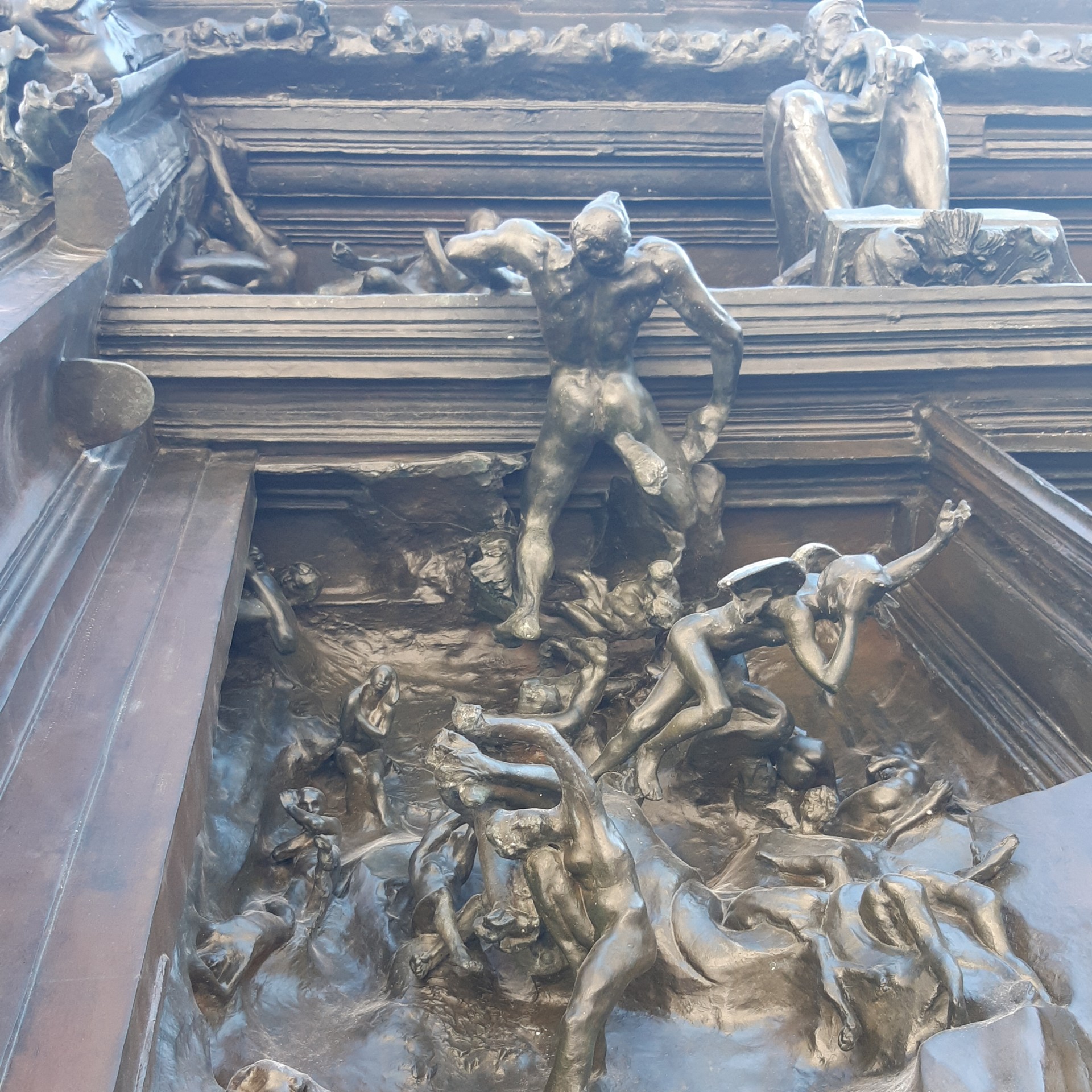
The museum café
Rodin was a very productive man and has left behind a massive collection of both his own works as well as the ones that he has acquired over time. The quantity of his collection, as well as undeniable quality, will leave you satisfied, but probably tired and hungry. After seeing the exposition of watercolour cut-outs and the collection of sculptures, you should sit at a table at the museum café. As prices go in Paris, you will pay more than it is reasonable for a simple salad or dessert, but keep in mind that they are highly delicious. It is definitely worth stopping and grabbing a nutritious meal at this place. They offer diverse and healthy options for a snack as well as a perfectly decent lunch.
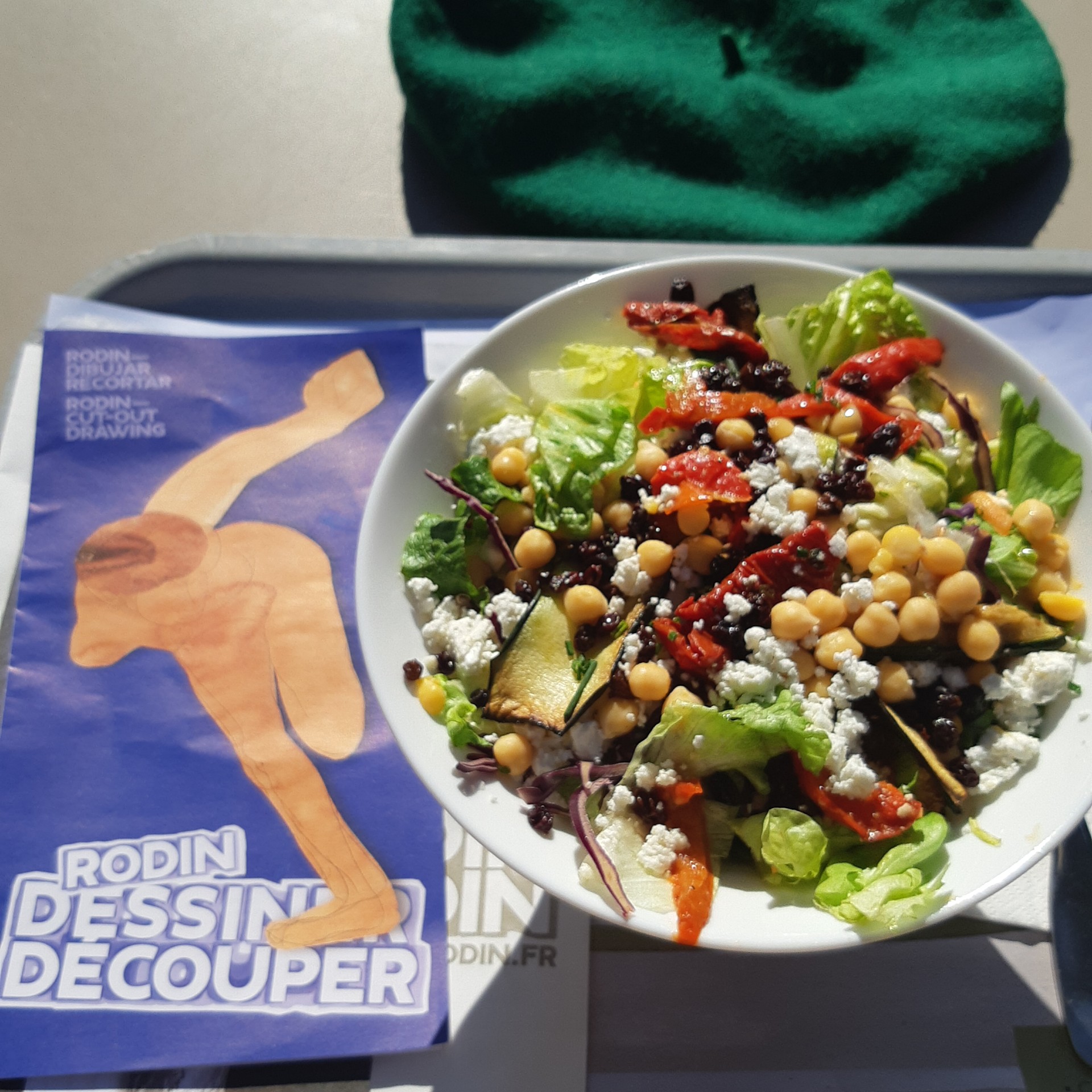
Important practical details
The museum is very accessible from the center of Paris. You can reach it with metro line number 13. You get off at the station Varenne and then you just take a short walk on the street with the same name, until you see the clearly marked entrance.
The museum is opened every day except on Mondays, from 10 am to 5.45 pm. The ticket office closes at 5.15, but keep in mind that half an hour anyways is not enough to see both the sculptures in the garden, the indoor collection and the cut-outs exhibition. If you are a student under the age of 26, you are lucky: this museum offers you free entry, as well as many other museums in France.
The extra portion of Rodin
If you didn't have enough of this great artist after visiting the Musée Rodin, you are lucky. If you sit on a tram RER C, go in the direction away from the busy center of Paris and get off at the station Meudon-Val-Fleury, you will find beautiful Villa des brilliants. It used to be the artist's home and he is also buried there with his wife, and nowadays it is the location of yet another museum, dedicated to sculptures of this magnificent man. It is opened on weekend afternoons only, on Friday, Saturday and Sunday from 1 to 6 pm.
In the memory of Camille Claudel
When we talk about Rodin, we often forget about a crucial figure in his life: his former student and lover Camille Claudel. She was a captivating human, blessed with great talent as well as extreme beauty, but suffered from the limitations that her time and place had put on a women. She shared ten years of her artistic career and personal life with Rodin, but always remained in his shadow. Their relationship was passionate, but also filled with extreme pain and disagreements; they were both dominant figures, convinced in their own right. After a decade of agony, Claudel decided to finish it once and for all. She rose to some success and achieved greater individuality in her work, but rumors and limits on her way put a price on her mental health. She spent the last thirty years of her life in a mental asylum, where she gave up making sculptures.
It is crucial that the memory of this extraordinary woman and her deeply intimate work is not forgotten. If you can while in Paris, visit any of her exhibitions. Most of her works are in the collection of ADAGP (Société des Auteurs dans les Arts graphiques et plastiques or Society of Authours in Graphic and Plastic Arts).
Photo gallery
Content available in other languages
- Español: Donde nacieron los amantes
Rate and comment about this place!
Do you know Musée Rodin (Rodin Museum)? Share your opinion about this place.




















